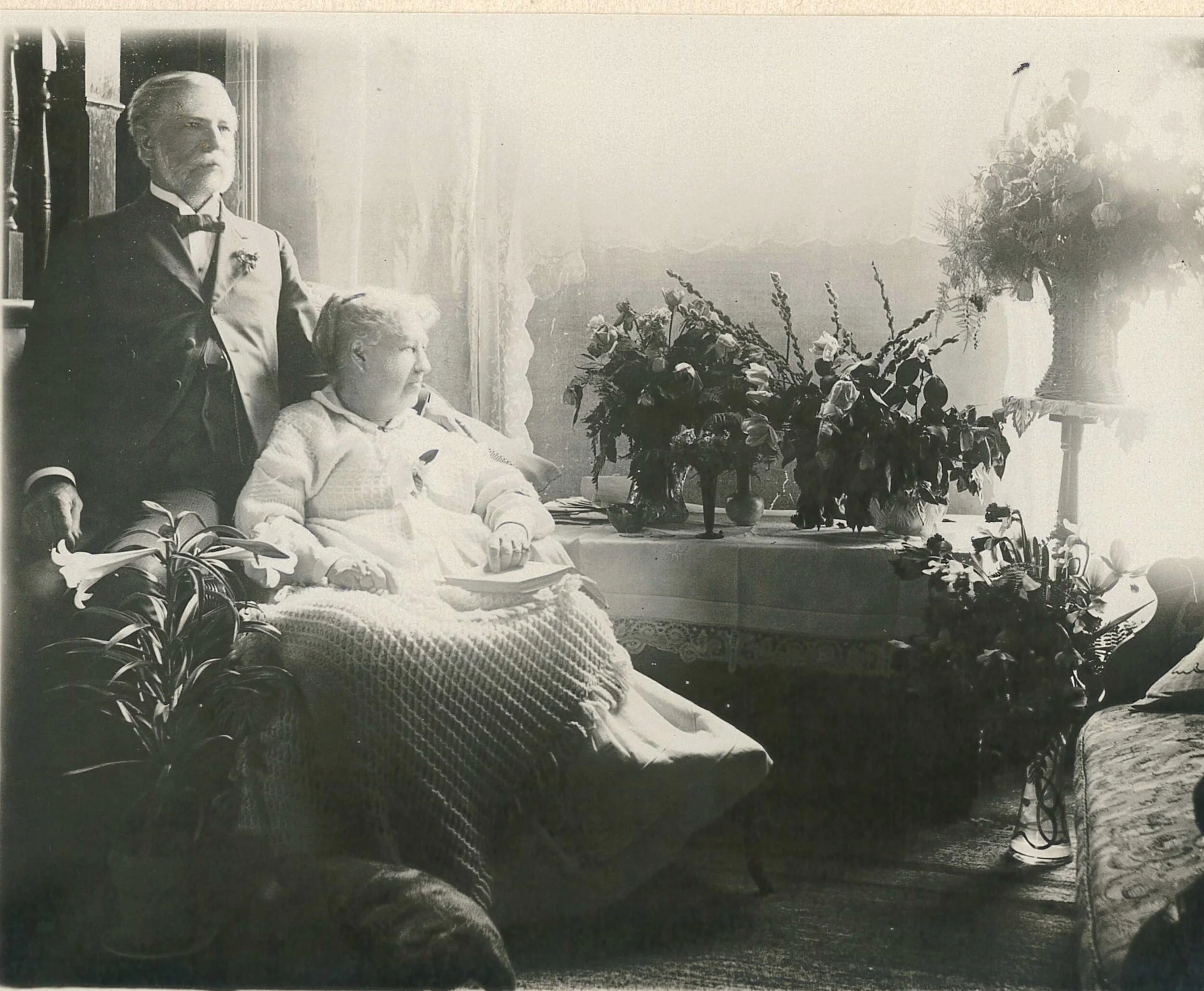A Look at Lilacia Park- Lilacs Come to Lombard
/A Trip Across the Ocean
Col. Plum and Helen Plum, 50th Anniversary.
William Plum and his wife, Helen, traveled to Europe in 1911. One of the stops during their journey was at Lemoine Nurseries in Nancy, France. When they returned to Lombard, they brought back two lilacs, S. vulgaris ‘Mme Casimir Perier’ which was white, and S. vulgaris ‘Michel Buchner’ which was light purple.
William Plum admitted he bought the shrubs for his wife but after planting them on his estate, he fell in love with the plants. He continued to purchase more lilacs from Lemoine Nursery as well as from other gardens in the United States. He admitted that he was not cultivating the plants but rather growing the various species of Syringa to sell or share with other enthusiasts.
Receipt, Lemoine Gardens.
Plum was an excellent documenter of his gardens, creating planting charts and keeping notes on not just the condition of his gardens but also where he purchased plants from. He also kept correspondence with people who purchased cuttings from his gardens.
After the Plums deaths, the new Lombard Park District Board was tasked to find the right landscape architect to redesign the estate into a park.
Jens Jensen, a noted landscaper, submitted a design that captured everyone’s attention. While the length and depth of Jensen’s involvement in Lombard is not known, minutes from the Lombard Women’s Club show that Jensen spoke at a meeting in the 1920s and archives containing Jensen's drawings indicate that the master designer had worked on a Lombard garden as early as 1914.
Furthermore, Jensen had associates that were Lombard residents so he may have met William and Helen Plum at some point and walked through the lilacs as they bloomed. Whatever his connections were to the Plum estate, he created a park that showcased the plants and have allowed many generations of Lombardians and visitors alike to enjoy the spring blooms.




